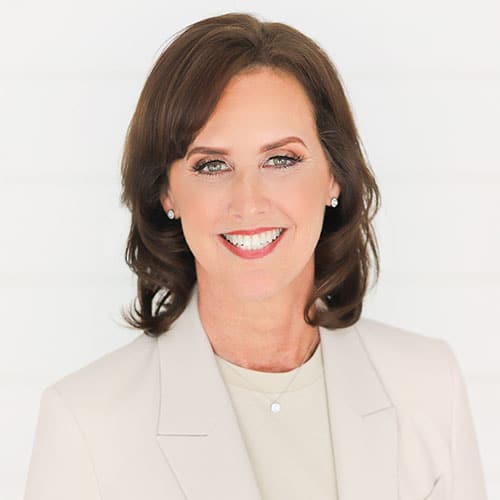An estate planning checklist is a great starting point when you’re trying to put together a well-thought-through and comprehensive estate plan to protect your heirs in case of death or disability.
Remember: the main estate planning goal is to protect both you and your family. Regardless of your wealth or age, you need to have an estate plan in place. To help you do that, we’ve put together this estate planning checklist that will help you create a complete estate plan.
Estate Planning Checklist
There are a few things that you can do to get started with your estate planning, including:
1. Identify Who You Want to Protect and Provide For
Figuring out the friends and family you want to protect and provide for is the first step you have to take when making an estate plan. You can also use this step to identify any charities that you want to support.
2. Figure Out the Ownership of Sentimental Assets and Valuable Property
Estate plans shouldn’t just cover major property assets like real estate but also which beneficiaries and heirs should receive assets that have emotional or sentimental value. While they may have little financial value, these sentimental assets are often the source of long-lasting and bitter family disputes. Make sure that you’re giving a lot of thought to how these assets are being allocated.
Estate plans also determine how much of the estate goes through the probate process. “The probate process can be expensive and time-consuming. There are ways that you can avoid probate, so you may want to include some of those methods in your estate planning checklist,” Leslie Thomas, attorney.
3. Include Non-financial Issues (i.e., medical treatment and minor children)
A comprehensive estate planning document will also cover non financial issues. For example, if you have children considered minors, you should figure out who will be their guardian if you and their other parent both pass away.
You must decide who will be responsible for your care and who will manage your assets when you can’t because of an injury or illness. Assets can be protected from heirs and creditors by using trusts and other methods.
A revocable living trust, for example, is a trust document created by someone that can be changed over time. A revocable living trust can often be used to avoid probate and to protect the privacy of the trust owner and the beneficiaries of the trust. It can also help minimize the estate tax that will need to be paid.
Estate planning is the time to take burdens off your family and friends by leaving guidelines for your burial arrangements and services.
Estate Planning Checklist to Ensure You Cover Everything
One of the biggest issues with estate plans is that people do nothing. If you don’t have a basic will, then the state will decide how your property is distributed. The best thing that you can do is to do your estate planning in segments by working through the estate planning checklist below.
4. Is Your Will Up to Date?
Dying intestate, or dying without a will, means that you have no say in who receives what of your assets. Instead, the state decides who gets what. This means that your friends, domestic partner, relatives other than your immediate family, pets, and charities won’t get anything.
If your children are minors, make sure that you name a couple of guardians and backup guardians for them in your will and include your wishes for their care and how they’ll be provided for financially. You also need to think about guardians for your pets.
This is why you need a will. When you draft it, you need to make sure that all of your property is accounted for and your beneficiary designation is explicitly named. Make sure that you’re also naming your executor and alternatives in case the personal representative you’ve named is no longer able to serve as the executor.
The will also needs to be signed in front of witnesses; the number of witnesses that need to be present will depend on your state.
5. Locate Your Important Documents
Some important documents include:
- Personal identification: marriage license, passport, and birth certificate
- Vehicle titles
- Home real estate deeds and mortgage docs
- Health care documents
- Divorce decree
- Tax returns and other important tax documents
- Recurring bills
- Bank account and investment account statements
- Last will and testament
- Power of attorney documents
- Retirement accounts
Your lawyer will help you figure out what important documents you need when you put together your estate plan.
6. Keep Track of Your Estate and Assets
You must keep an updated list of all of your liabilities and assets, including where they’re located. Ensure that you’re updating this list annually and share it with your executor and spouse.
7. Figure Out How Much Life Insurance You Need
Traditionally, a life insurance policy is used to pay off any estate tax or federal estate tax but can be used for other things. You may want a life insurance policy to pay off any debts or other expenses and financial accounts in the event of disability or death.
8. Establish Final Expense Plans
You’ll be estimating the number of expenses that will likely be incurred by your death or any that will continue after your death until your estate is settled. To take the burden off your family, make it part of your estate planning checklist to make a final expense plan so you can ensure that that your estate will have enough money to pay these final expenses.
9. Write Letters of Instruction for Your Family and Executor
These letters are documents that will give your family and executor important information about where to locate all of them. Your mortgages, vehicle loans, credit cards, insurance policies, and financial accounts.
These letters should include any contact information of friends and relatives to inform them that you’ve passed. It should also include where assets are located and give instructions about your wishes for burial, cremation, organ donation, and funeral ceremonies.
You should know that these letters aren’t legally binding.
You can also use this document to inform your trustees, executor, and family of your overall estate plan.
A durable power of attorney can also be written up for medical care and finances. A durable power of attorney is a document that remains in effect in case you become incapacitated at any point and can no longer handle matters on your own. For more information and guidance on a durable power of attorney, be sure to discuss it with an estate planning attorney.
Conclusion
Estate planning includes more than just drafting a will. There are so many people who don’t complete or start estate planning because they don’t know where to start.
That’s where this estate planning checklist comes in handy. You can use this estate planning checklist as a starting point, then talk with an estate planning attorney at Thomas Walters to get more help.






